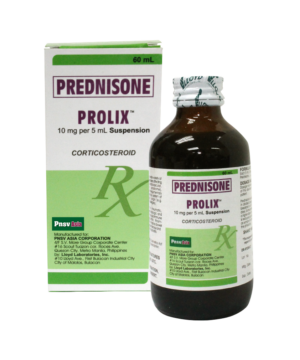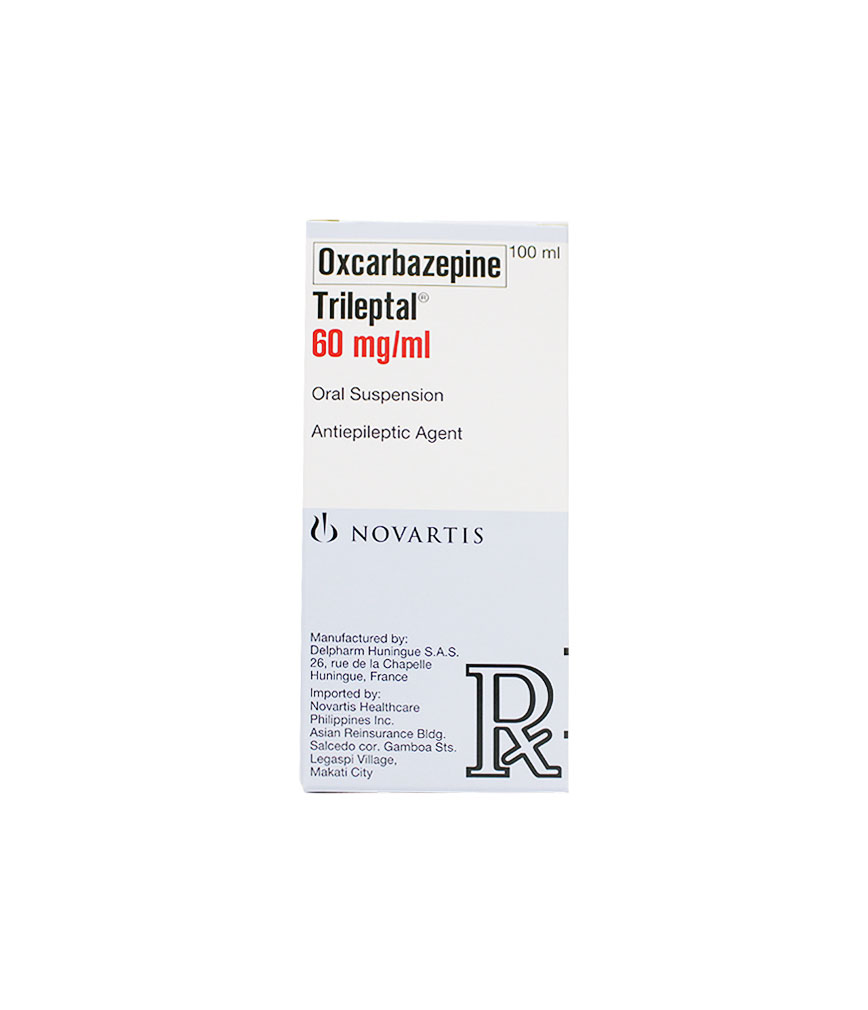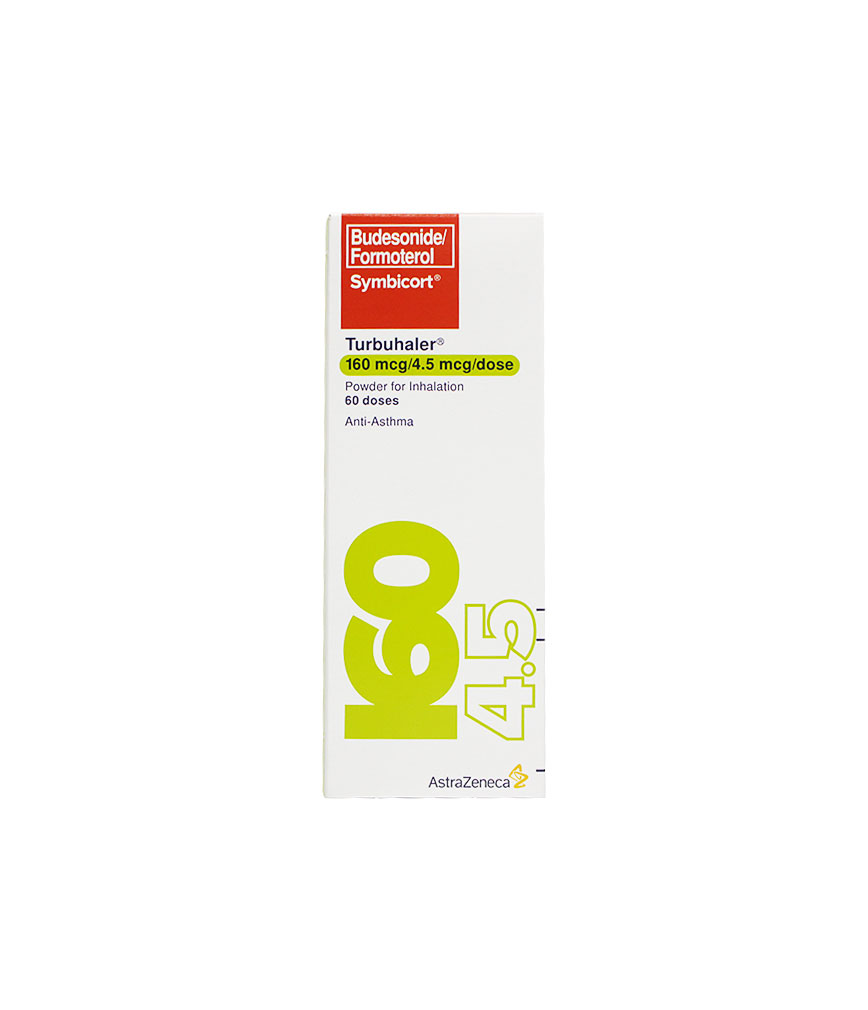Description
Trileptal 300 Mg Tablet
Description : Each film-coated tablet contains 300 mg or 600 mg oxcarbazepine.
1 mL of the oral suspension contains 60 mg oxcarbazepine.
Indications / Uses : Indicated in adults and in children aged 1 month and above for the treatment of: Partial seizures (which include the seizure subtypes of simple, complex and partial seizures evolving to secondarily generalized seizures) and; generalized tonic-clonic seizures.
As a first-line antiepileptic drug for use as monotherapy or adjunctive therapy.
Replacement for other antiepileptic drugs when current therapy provides insufficient seizure control (see Pharmacology: Pharmacodynamics: Clinical Studies under Actions).
Administration : May be taken with or without food.
Contraindications : Known hypersensitivity to oxcarbazepine or to any of the excipients.
Special Precautions :
Hypersensitivity: Class I (immediate) hypersensitivity reactions including rash, pruritus, urticaria, angioedema and reports of anaphylaxis have been received in the post-marketing period. Cases of anaphylaxis and angioedema involving the larynx, glottis, lips and eyelids have been reported in patients after taking the first or subsequent doses of oxcarbazepine (Trileptal). If a patient develops these reactions after treatment, the drug should be discontinued and an alternative treatment started.
Patients who have exhibited hypersensitivity reactions to carbamazepine should be informed that approximately 25-30% of these patients may experience hypersensitivity reactions (see Adverse Reactions).
Hypersensitivity reactions, including multi-organ hypersensitivity reactions, may also occur in patients without history of hypersensitivity to carbamazepine. Such reactions can affect the skin, liver, blood and lymphatic system or other organs, either individually or together in the context of a systemic reaction (see Adverse Reactions). In general, if signs and symptoms suggestive of hypersensitivity reactions occur, treatment should be withdrawn immediately.
Dermatological effects: Serious dermatological reactions, including Stevens-Johnson syndrome, toxic epidermal necrolysis (Lyell’s syndrome) and erythema multiforme, have been reported very rarely in association with oxcarbazepine (Trileptal) use. Patients with serious dermatological reactions may require hospitalization, as these conditions may be life-threatening and very rarely be fatal. Associated cases occurred in both children and adults. The median time to onset was 19 days. Several isolated cases of recurrence of the serious skin reaction when re-challenged with oxcarbazepine were reported. Should a patient develop a skin reaction, consideration should be given to discontinuing treatment and prescribing another anti-epileptic drug.
Pharmacogenomics: There is growing evidence that different Human Leukocyte Antigen (HLA) alleles play a role in association with adverse cutaneous reactions in predisposed patients.
Association with HLA-B*1502: Retrospective studies in patients of Han Chinese and Thai origin found a strong correlation between SJS/TEN skin reactions associated with carbamazepine and the presence in these patients of the Human Leukocyte Antigen (HLA)-B*1502 allele. As the chemical structure of oxcarbazepine is similar to that of carbamazepine, there is a possibility that patients carrying the HLA-B*1502 allele also have an increased risk of SJS/TEN skin reactions with oxcarbazepine.
The frequency of HLA-B*1502 allele ranges from 2 to 12% in Han Chinese populations and is about 8% in Thai populations, and above 15% in the Philippines and some Malaysian populations. Allele frequencies up to about 2% and 6% have been reported in Korea and India, respectively. The frequency of the HLA-B*1502 allele is negligible in persons from European descent, several African populations, indigenous peoples of the Americas, Hispanic populations sampled and in Japanese (<1%).
The allele frequencies listed here represent the percentage of chromosomes in the specified population that carry the allele of interest, meaning that the percentage of patients who carry a copy of the allele on at least one of their two chromosomes (i.e., the “carrier frequency”) is nearly twice as high as the allele frequency. Therefore, the percentage of patients who may be at risk is nearly twice the allele frequency.
Testing for the presence of the HLA-B*1502 allele should be considered in patients with ancestry in genetically at-risk populations, prior to initiating treatment (see Information for healthcare professionals as follows). The use of oxcarbazepine (Trileptal) should be avoided in tested patients who are found to be positive for HLA-B*1502 unless the benefits clearly outweigh the risks. HLA-B*1502 may be a risk factor for the development of SJS/TEN in Chinese patients taking other anti-epileptic drugs (AED) associated with SJS/TEN. Consideration should therefore be given to avoid use of other drugs associated with SJS/TEN in HLA-B*1502 positive patients, when alternative therapies are otherwise equally acceptable. Screening is not generally recommended in patients from populations in which the prevalence of HLA-B*1502 is low or in current oxcarbazepine users, as the risk of SJS/TEN is largely confined to the first few months of therapy, regardless of HLA-B*1502 status.
Association with HLA-A*3101: Human Leukocyte Antigen (HLA)-A*3101 may be a risk factor for the development of cutaneous adverse drug reactions such as SJS, TEN, DRESS, AGEP and maculopapular rash.
The frequency of the HLA-A*3101 allele varies widely between ethnic populations and its frequency is about 2 to 5% in European populations and is about 10% in the Japanese population. The frequency of this allele is estimated to be less than 5% in the majority of Australian, Asian, African and North American populations with some exceptions within 5 to 12%. Frequency above 15% has been estimated in some ethnic groups in South America (Argentina and Brazil), North America (US Navajo and Sioux, and Mexico Sonora Seri) and Southern India (Tamil Nadu) and between 10% to 15% in other native ethnicities in these same regions.
The allele frequencies listed here represent the percentage of chromosomes in the specified population that carry the allele of interest, meaning that the percentage of patients who carry a copy of the allele on at least one of their two chromosomes (i.e., the “carrier frequency”) is nearly twice as high as the allele frequency. Therefore, the percentage of patients who may be at risk is nearly twice the allele frequency.
There is some data that suggest HLA-A*3101 is associated with an increased risk of carbamazepine-induced cutaneous adverse drug reactions including SJS, TEN, drug rash with eosinophilia (DRESS), or less severe acute generalized exanthematous pustulosis (AGEP) and maculopapular rash.
There are insufficient data to support a recommendation for testing the presence of the HLA-A*3101 allele in patients, prior to initiating treatment with oxcarbazepine. Genetic screening is generally not recommended for any current oxcarbazepine users, as the risk of SJS/TEN, AGEP, DRESS and maculopapular rash is largely confined to the first few months of therapy, regardless of HLA-A*3101 status.
Limitation of genetic screening: Genetic screening results must never substitute for appropriate clinical vigilance and patient management. Many Asian patients positive for HLA-B*1502 and treated with oxcarbazepine (Trileptal) will not develop SJS/TEN and patients negative for HLA-B*1502 of any ethnicity can still develop SJS/TEN. Similarly many patients positive for HLA-A*3101 and treated with oxcarbazepine (Trileptal) will not develop SJS, TEN, DRESS, AGEP or maculopapular rash, and patients negative for HLA-A*3101 of any ethnicity can still develop these severe cutaneous adverse reactions. The role of other possible factors in the development of, and morbidity from, these severe cutaneous adverse reactions, such as AED dose, compliance, concomitant medications, co-morbidities, and the level of dermatologic monitoring have not been studied.
Information for healthcare professionals: If testing for the presence of the HLA-B*1502 allele is performed, high-resolution “HLA-B*1502 genotyping” is recommended. The test is positive if either one or two HLA-B*1502 alleles are detected and negative if no HLA-B*1502 alleles are detected. Similarly, if testing for the presence of the HLA-A*3101 allele is performed, high resolution “HLA-A*3101 genotyping” respectively is recommended. The test is positive if either one or two HLA-A*3101 alleles are detected and negative if no HLA-A*3101 alleles are detected.
Risk of seizure aggravation: Risk of seizure aggravation has been reported with oxcarbazepine (Trileptal). The risk of seizure aggravation is seen especially in children but may also occur in adults. In case of seizure aggravation, treatment should be discontinued.
Hyponatraemia: Serum sodium levels below 125 mmol/L, usually asymptomatic and not requiring adjustment of therapy, have been observed in up to 2.7% of treated patients. Experience from clinical trials shows that serum sodium levels returned towards normal when the dosage was reduced, discontinued or the patient was treated conservatively (e.g. restricted fluid intake). In patients with pre-existing renal conditions associated with low sodium (e.g. inappropriate ADH secretion like syndrome) or in patients treated concomitantly with sodium-lowering drugs (e.g. diuretics, drugs associated with inappropriate ADH secretion), serum sodium levels should be measured prior to initiating therapy. Thereafter, serum sodium levels should be measured after approximately two weeks and then at monthly intervals for the first three months during therapy, or according to clinical need. These risk factors may apply especially to elderly patients. For patients on oxcarbazepine (Trileptal) therapy when starting on sodium-lowering drugs, the same approach for sodium checks should be followed. In general, if clinical symptoms suggestive of hyponatraemia occur on therapy (see Adverse Reactions), serum sodium measurement may be considered. Other patients may have serum sodium assessed as part of their routine laboratory studies. All patients with cardiac insufficiency and secondary heart failure should have regular weight measurements to determine occurrence of fluid retention. In case of fluid retention or worsening of the cardiac condition, serum sodium should be checked. If hyponatraemia is observed, water restriction is an important counter-measure. As oxcarbazepine may, very rarely, lead to impairment of cardiac conduction, patients with pre-existing conduction disturbances (e.g. AV-block, arrhythmia) should be monitored carefully.
Hypothyroidism: Hypothyroidism is a very rare adverse drug reaction of oxcarbazepine. Considering the importance of thyroid hormones in children’s development after birth, it is advisable to perform a thyroid function test before the start of oxcarbazepine (Trileptal) therapy in the pediatric age group, especially in children aged two years or below. Thyroid function monitoring is recommended in the pediatric age group while on therapy.
Hepatic function: Very rare cases of hepatitis have been reported, which in most of the cases resolved favorably. In case of suspected hepatitis, discontinuation of oxcarbazepine (Trileptal) should be considered. Caution should be exercised when treating patients with severe hepatic impairment (see Pharmacology under Actions and Dosage & Administration).
Renal function: In patients with impaired renal function (creatinine clearance less than 30 mL/min), caution should be exercised during treatment especially with regard to the starting dose and up titration of the dose (see Pharmacology under Actions and Dosage & Administration).
Hematological effects: Very rare reports of agranulocytosis, aplastic anemia and pancytopenia have been seen in patients treated with oxcarbazepine (Trileptal) during post-marketing experience (see Adverse Reactions). However, due to the very low incidence of these conditions and confounding factors (e.g. underlying disease, concomitant medication), causality cannot be established.
Discontinuation of the drug should be considered if any evidence of significant bone marrow depression develops.
Suicidal ideation and behavior: Suicidal ideation and behavior have been reported in patients treated with antiepileptic agents in several indications. A meta-analysis of randomized placebo-controlled trials of antiepileptic drugs has shown a small increased risk of suicidal ideation and behavior. The mechanism of this risk is not known.
Therefore patients should be monitored for signs of suicidal ideation and behavior and appropriate treatment should be considered. Patients (and caregivers of patients) should be advised to seek medical advice should signs of suicidal ideation or behavior emerge.
Interactions: Hormonal contraceptives: Female patients of childbearing age should be warned that the concurrent use of oxcarbazepine (Trileptal) with hormonal contraceptives may render this type of contraception ineffective (see Use in Pregnancy & Lactation and Interactions). Additional, non-hormonal forms of contraception are therefore recommended.
Alcohol: Caution should be exercised if alcohol is taken in combination with oxcarbazepine (Trileptal) therapy, due to a possible additive sedative effect.
Withdrawal effects: As with all antiepileptic drugs, oxcarbazepine (Trileptal) should be withdrawn gradually to minimize the potential of increased seizure frequency.
Driving and using machines: Adverse reactions such as dizziness, somnolence, ataxia, diplopia, blurred vision, visual disturbances, hyponatremia and depressed level of consciousness were reported (for the complete list of ADRs see Adverse Reactions), especially at the start of treatment or in connection with dose adjustments (more frequently during the up titration phase). Patients should therefore exercise due caution when driving a vehicle or operating machinery.














Reviews
There are no reviews yet.